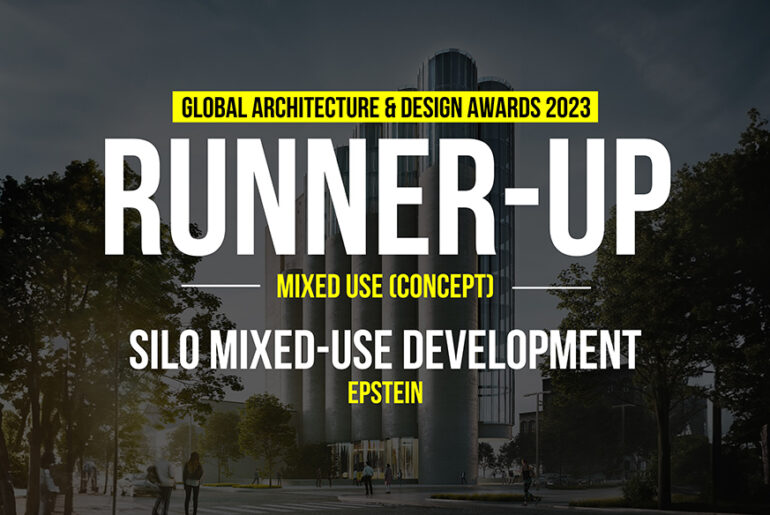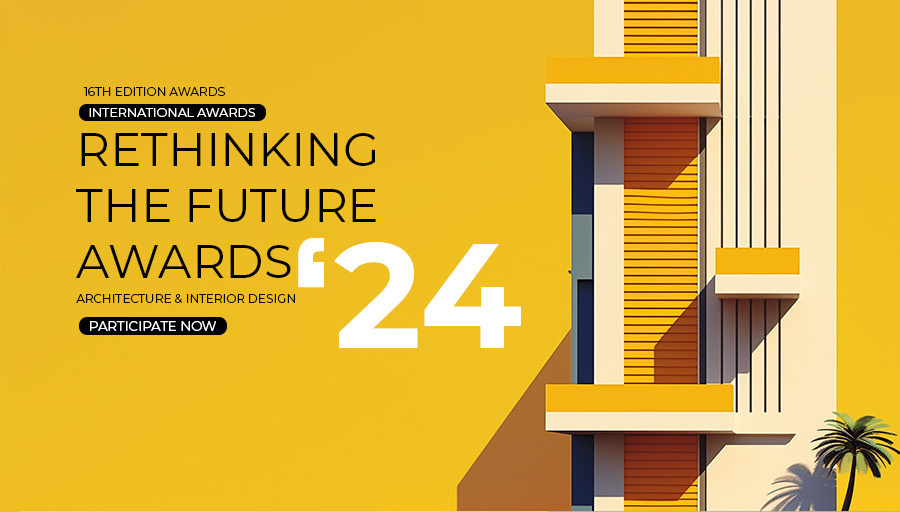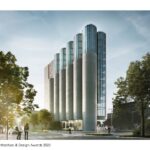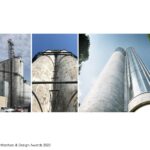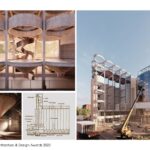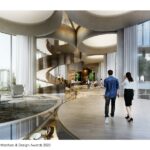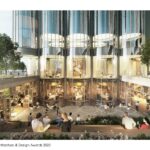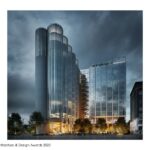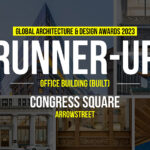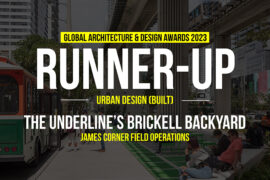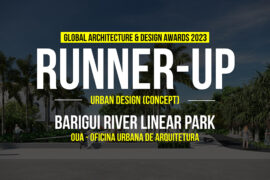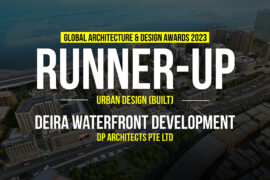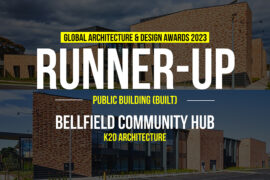In the 1850s, Chicago was considered the grain capital of the world. The mill and silo buildings, located primarily within the Fulton Market neighborhoods, are a direct reflection of Chicago’s wheat industry heritage, one of the major industries upon which the city was built. In recent years, as Fulton Market has become more trendy with the opening of new bars, restaurants, residences and offices, many of the protected historic buildings have been renovated. Unprotected historic buildings beyond the district boundaries, however, are routinely threatened with demolition.
Global Design & Architecture Design Awards 2023
Second Award | Mixed Use (Concept)
Project Name: Silo Mixed Use Development
Category: Mixed Use (Concept)
Studio Name: Epstein
Design Team: Patrick Carata, Marcin Rysniak, Randy Buescher & Ed Curley
Area: 400,000sf (37,161m2)
Year: 2019
Location: Chicago
Consultants: n/a
Photography Credits: Epstein
Render Credits: Epstein
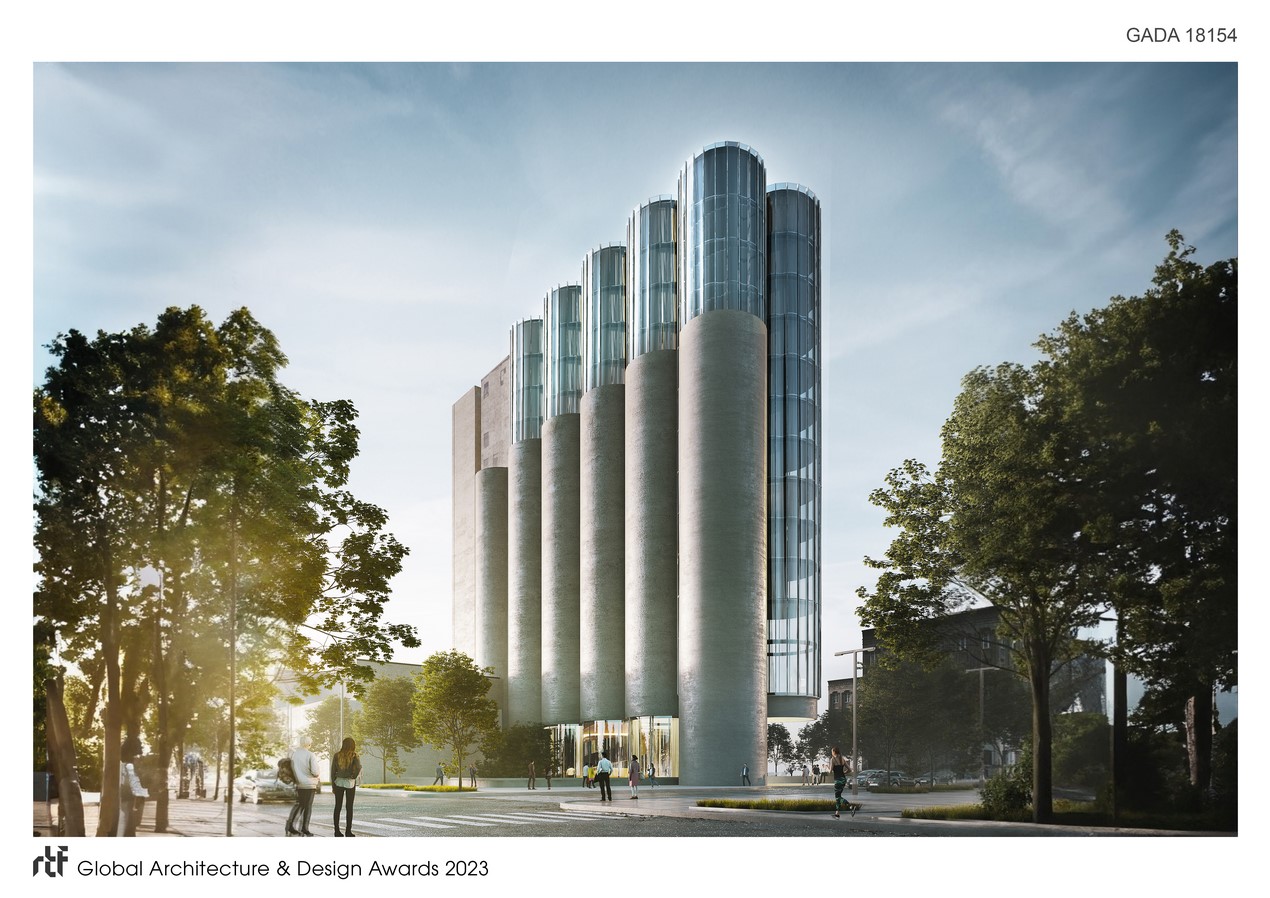
In the 1850s, Chicago was considered the grain capital of the world. The mill and silo buildings, located primarily within the Fulton Market neighborhoods, are a direct reflection of Chicago’s wheat industry heritage, one of the major industries upon which the city was built. In recent years, as Fulton Market has become more trendy with the opening of new bars, restaurants, residences and offices, many of the protected historic buildings have been renovated. Unprotected historic buildings beyond the district boundaries, however, are routinely threatened with demolition.
One such example was a 250,000-square-foot mill factory, which spanned a 2.2-acre site and included a series of brick loft buildings ranging from three to six stories tall and a soaring concrete structure with more than a dozen silos.
Epstein seized the opportunity and developed a design solution that would preserve the character of the existing grain silos while incorporating the modern program elements that would allow the project to be financially viable and profitable.
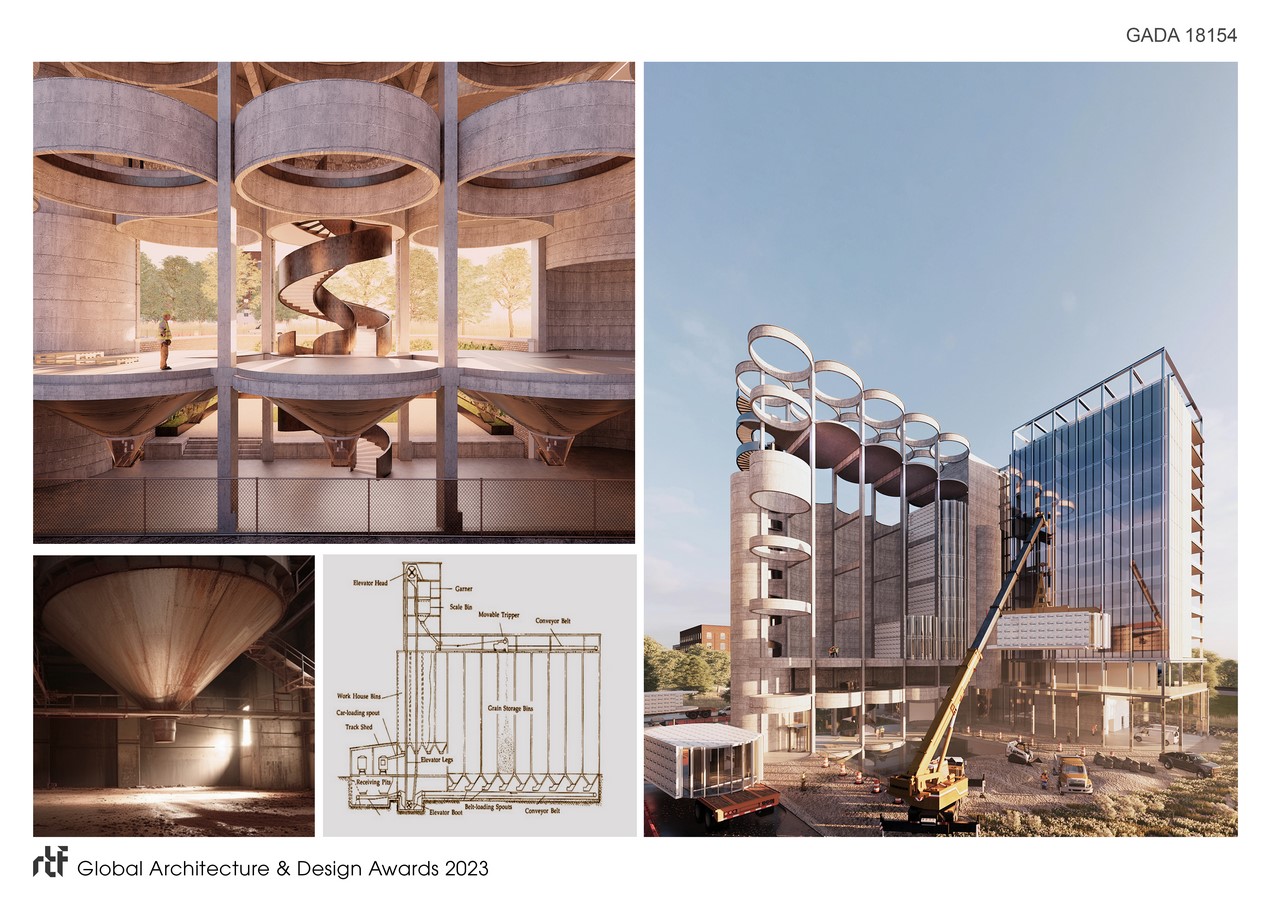
Design Process:
Epstein treated the site as an archeological find. Our mission was to metaphorically and physically excavate the site, peel away some of its layers and expose its inner components, educating anyone who would, at some point, interact with and view the building.
We researched the history of the silos, but, more importantly, we wanted to understand what drove their iconic form and what their original purpose and function was. The east side of the building was peeled away to insert the new modular program elements, allowing the public to view this hidden cross section and inner parts of the building. The site to the east and west was excavated, and a sunken plaza was created to reveal and give access to the existing steel grain funnels and grain conveyor belts. The building was sliced horizontally to reveal the bundled concrete drum geometry, which would become the lobby and amenities ceiling.
We imagined different ways to experience the concrete tubes and proceeded to place public stairs within them, as floating pods on the floor and as ceilings. Our primary goal and inspiration was to celebrate the iconic tubular structure while also educating the public as to how this mysterious building used to function.
Design Vision:
– The silhouette of the silos and elevator are preserved on the west end of the building, while the east side carefully excises out portions of the concrete drums to expose the inner workings, allowing for modular residential and hotel rooms to be stacked within in.
– A sunken plaza was conceived to create a public outdoor-stepped landscaped and seating area. Excavating the sunken plaza allowed the public to see the inner workings of the grain silos; these functional components were once hidden from view. This stepped plaza area also transforms into bleachers, providing the perfect view of the existing grain conveyor belts and steel funnels. The lower level would take advantage of this unique character to house a newly-built restaurant and bar with a reflective pool.
– A series of hydroponic gardens were introduced in the penthouse-level greenhouse. This acts as a green lung for the building, providing access to landscaping in all seasons while oxygenating indoor air. Furthermore, the plants occupying this space would be carefully selected for their ability to produce oxygen and purify the air.
– The residential and hotel units would be constructed offsite, transported to the site in flatbed trucks, and hoisted and stacked into place within the confines of the existing silo concrete drums. Each modular unit would have its own structural system. This method of construction reduces waste.

– The residential units would primarily be duplexes while the hotel rooms, following brand standards, would be comprised of a mixture of suites, king and double queen rooms.
– To the east of the existing silo, a new modern addition would be constructed, housing hotel and residential units.
– Amenities such as fitness, pool and a rooftop bar and patio area would also be constructed.
An Iconic building destined for landfill would be saved.

